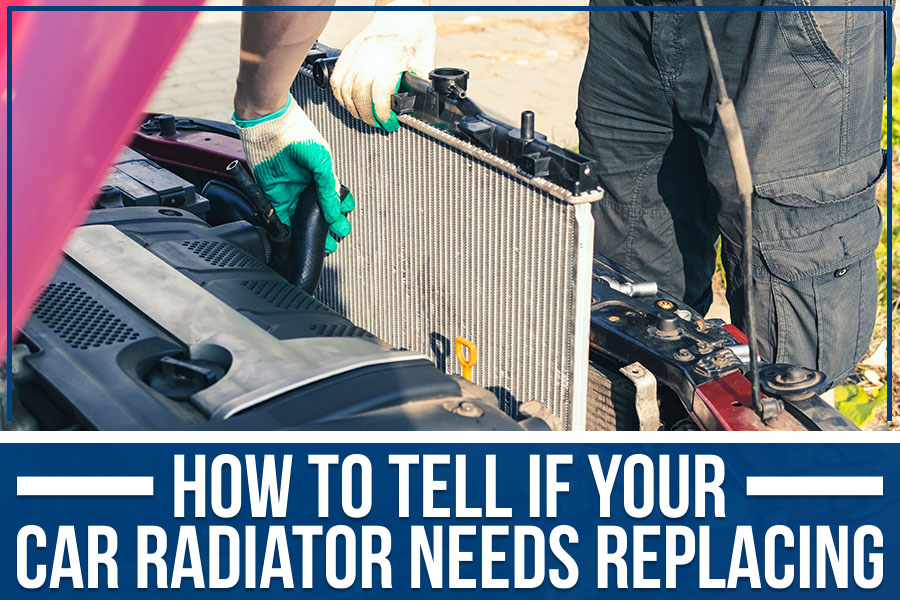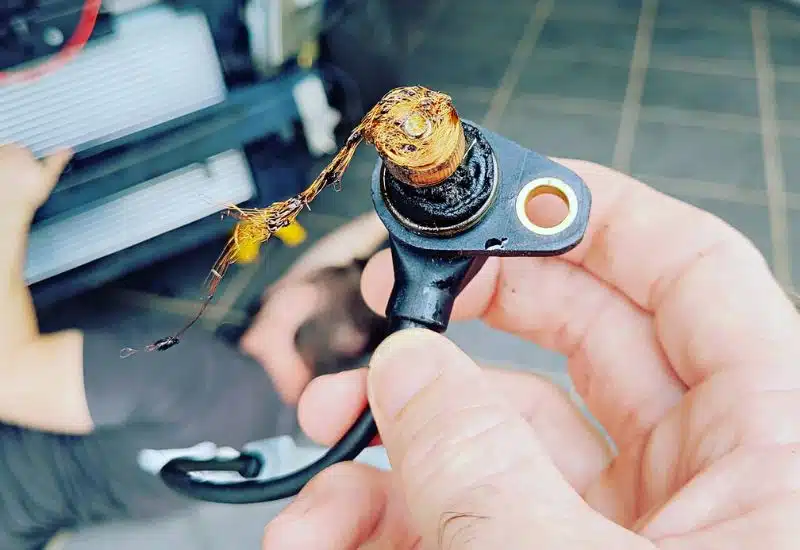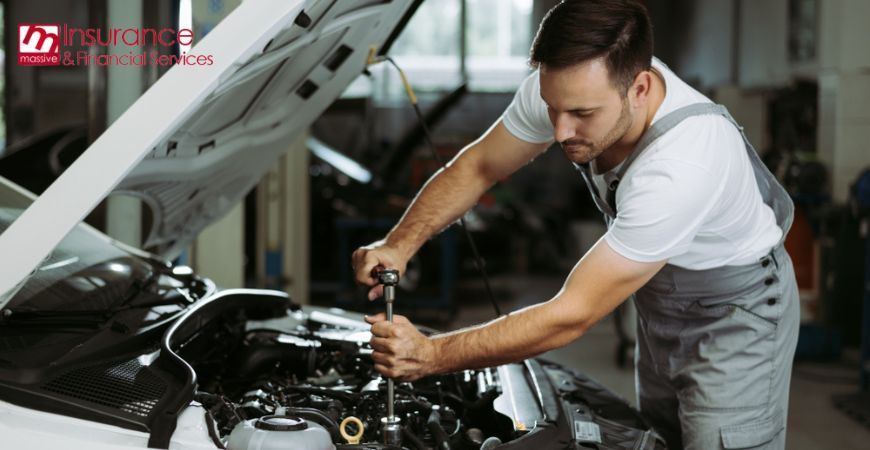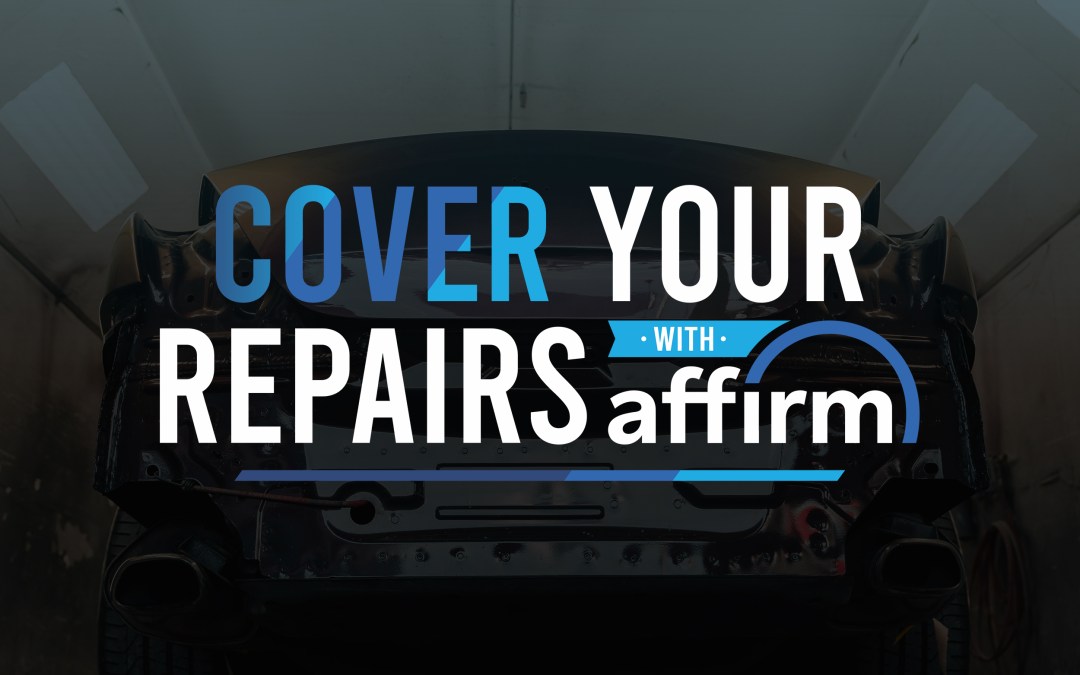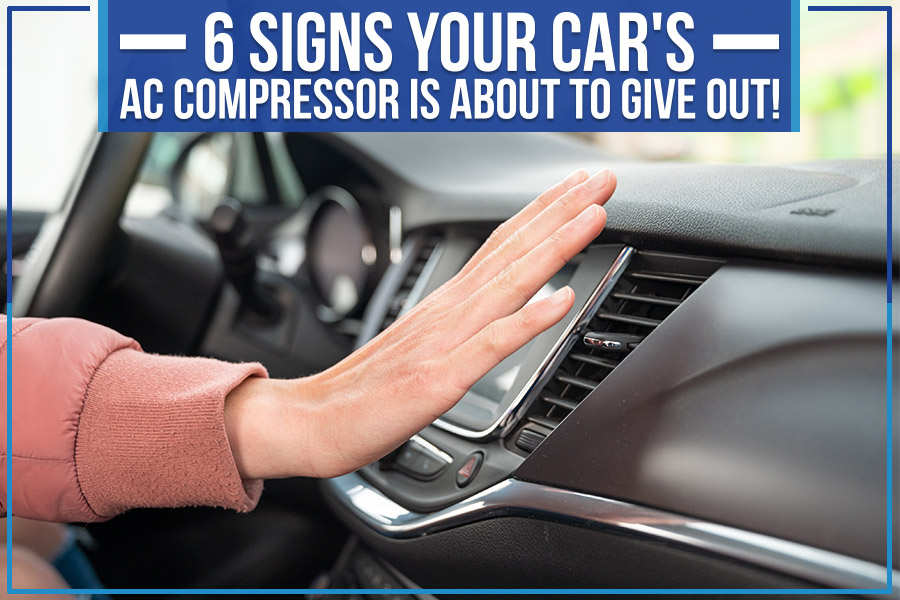How Do I Know If My Radiator Needs Replacing?
Your radiator may need replacing if it leaks, overheats, or has visible damage. Consistent cooling issues also indicate a need for a new radiator.
A vehicle’s radiator is crucial for maintaining the engine’s proper operating temperature by dissipating heat. An efficient, functioning radiator ensures that your engine avoids overheating, which can lead to severe damage. Recognizing the signs of a failing radiator is essential for car maintenance.
Symptoms such as persistent overheating, coolant leaks under the car, and discoloration or sludge in the coolant are clear indicators. Regular inspections can reveal corrosion or cracks in the radiator body, which compromise its integrity. Car owners should address these issues promptly to prevent costly repairs and maintain optimal performance.
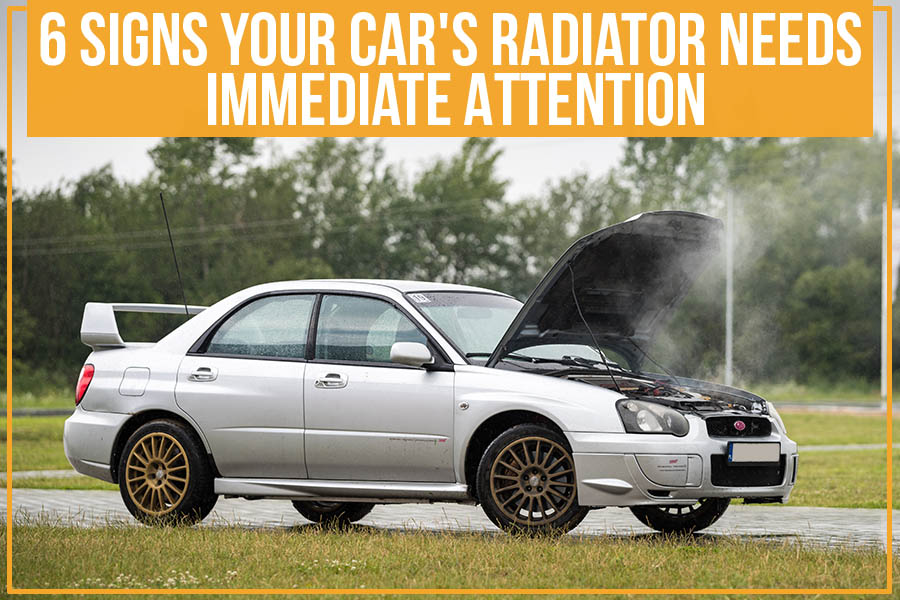
Credit: www.vannyorkgm.com
Signs Of A Failing Radiator
Keeping your engine cool is crucial to a smooth ride. Your radiator plays a key role in this. Spotting a failing radiator early can save time and money. Below are clear signs that your car’s radiator might need replacing. Take note!
Persistent Overheating
An important sign of a radiator problem is consistent engine overheating. If the temperature gauge is often high, your radiator might not be working properly.
- Temperature gauge reads high often
- Engine warms up faster than usual
Leakage And Fluid Discoloration
Coolant leaks are tell-tale signs your radiator needs attention. Look for puddles or stains under your car. Discolored coolant also signals trouble.
| Location | Description |
|---|---|
| Under the car | Puddles or stains |
| In the coolant reservoir | Brown or sludgy fluid |
Sludge In The Radiator
Radiators should have clean, brightly colored coolant. If it looks sludgy or rusty, your radiator could be failing. Sludge stops your radiator from working right.
- Check your coolant
- Notice the color and texture
- Look for any signs of rust or sludge
Radiator Function And Importance
Your car’s radiator is the champion of the cooling system, keeping your engine from overheating. A failing radiator can spell trouble for your vehicle’s performance and safety. Understanding its role and importance is key in knowing when it’s time for a replacement.
Role In Engine Cooling
The radiator ensures that your engine operates within an optimal temperature range. It circulates coolant through the engine and back into the radiator where heat dissipates. This process is vital because an overheated engine can lead to severe damage or failure.
- Transfers heat: Hot coolant is cooled down in the radiator.
- Regulates temperature: Maintains a safe operating temperature for your engine.
Impact On Vehicle Performance
A well-functioning radiator contributes to your vehicle’s overall efficiency. Without it, you might notice poor performance, including decreased power, acceleration, and fuel economy. The following effects are signs your radiator could be compromised:
- Engine overheats: A clear sign your radiator isn’t doing its job.
- Visible coolant leaks: Puddles of coolant under your car indicate a leak.
- Sludge in the radiator: Contaminated coolant can turn to sludge, impairing function.
Diagnosing Radiator Problems
Your car’s radiator is the heart of its cooling system. It keeps the engine from overheating. Knowing when it needs replacing is critical. Here are signs of radiator trouble.
Inspection For Leaks And Corrosion
Check for visual cues under the hood. Look for green or orange droplets. These are coolant leaks. Spot rust or discoloration? These suggest corrosion. Both leaks and corrosion can lead to serious issues.
- Coolant on the ground. Puddles under your car? It’s a red flag.
- Brownish or dirty coolant. Contaminated coolant can cause overheating.
- Crusty residue on radiator. This is often a sign of a past leak that has dried.
Radiator Pressure Test
A pressure test checks for hidden problems. A mechanic pumps air into the cooling system and watches the gauge. If pressure drops, there’s a leak. No pressure drop means the radiator is-ok,”
- Attach pressure tester. This tool screws onto the radiator cap.
- Pump to add pressure. Find the recommended pressure in the manual.
- Watch the gauge. Falling pressure means you might need a new radiator.
Temperature Gauge Fluctuations
Watch the temperature gauge as you drive. It should stay in the middle range. Fluctuations mean trouble. Rising quickly? Falling? These are bad signs. A steady gauge means good radiator health.
- Rising fast on idle. Radiator not cooling effectively.
- High-temperature warnings. Overheating can cause engine damage.
- Inconsistent readings. Indicates radiator or thermostat issues.
Spot these signs? Visit a mechanic. They will tell you if you need a replacement.

Credit: www.auffenbergfarmington.com
Consequences Of Postponing Replacement
Ignoring signs that a radiator needs replacing can lead to more than just overheating on a hot day. It threatens the well-being of your car’s engine and wallet. Understanding the risks helps prevent severe damage and costly repairs down the line. It’s essential to act before these issues escalate.
Damage To The Engine
The engine is the heart of a car. A faulty radiator can cause catastrophic engine damage. Overheating is the primary risk when a radiator fails. Without a prompt replacement, the engine’s components warp and break. These are the signs to watch for:
- Temperature gauge spikes – indicating excessive heat.
- Coolant leaks – shown by puddles under the car.
- Unusual noises – such as clunking from the engine area.
- Discolored coolant – suggesting contamination and blockages.
Increased Repair Costs
Postponing radiator replacement inevitably inflates repair costs. A timely intervention can mean a straightforward radiator change. Delaying the process puts not just the radiator, but adjacent systems at risk. Here’s a breakdown of potential costs:
| Part/Service | Immediate Replacement Cost | Delayed Replacement Cost |
|---|---|---|
| Radiator | $300 – $900 | Significantly Higher |
| Engine Repair | Not Needed | |
| Gaskets | Not Needed | |
| Coolant System | Not Needed |
Secondary repairs can include gaskets, hoses, and even the entire cooling system. These are avoidable if a radiator is replaced on time.
Choosing The Right Replacement
Is your car’s heating acting up or you notice a coolant leak? It might be time for a new radiator. But don’t rush just yet! Let’s talk about choosing the right replacement. A proper fit and top-notch quality are key to a well-functioning cooling system.
Compatibility And Quality
For a seamless swap, double-check your car’s specs. Note the model, year, and engine size. A mismatched radiator can lead to more issues. Quality matters too!
- Match the material: Whether it’s aluminum or plastic, stick with what’s proven for your car.
- Check the core: More core rows mean better cooling. Make sure the new one aligns with your old radiator’s design.
Professional Installation Vs Diy
Installing a radiator can be tricky. Are you confident in your car repair skills?
| Professional Installation | DIY |
|---|---|
| Guaranteed expertise and tools for the job. | Cost-effective if you have the necessary skills. |
| Less worry about mistakes that can cause damage. | Gives you a sense of accomplishment and control. |
A professional can ensure everything fits just right. Without the right tools or know-how, a DIY effort could be costly.
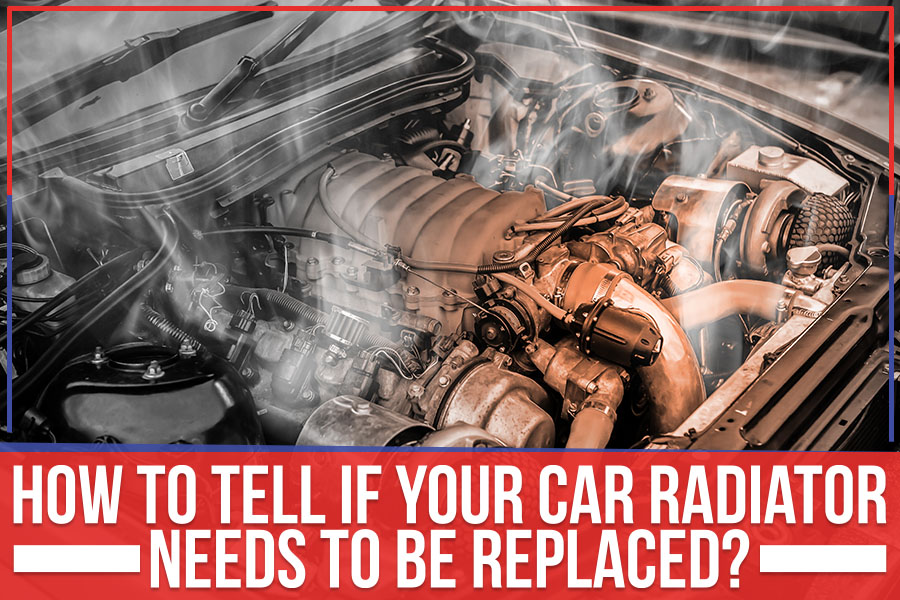
Credit: www.feldmanwoodhaven.com
Maintenance To Extend Radiator Life
Your car’s radiator keeps the engine cool and happy. Knowing how to keep it in top shape matters! Below are some simple yet effective maintenance tips. These steps can help prevent your radiator from giving up on you. Let’s dive in and keep that engine purring.
Regular Coolant FlushesRegular Coolant Flushes
Old coolant can harm your radiator. It can cause rust and other issues. A flush cleans out old fluid and puts in fresh coolant. It’s like giving your radiator a reset. Aim to flush it every 30,000 miles or as your manual suggests.
Checking Hoses and ClampsChecking Hoses And Clamps
Hoses carry the coolant to and from your radiator. Weak or cracked hoses mean trouble. Tighten loose clamps and replace brittle hoses. Regular checks save you from leaks and engine overheats.
Monitoring Coolant LevelsMonitoring Coolant Levels
Coolant level drops? You might have a leak. Keep your coolant at the right level. Check it during routine oil changes for peace of mind. Don’t wait for a dashboard warning light to come on.
Helpful Maintenance Reminder List- Flush your radiator every 30,000 miles or as needed.
- Inspect hoses and clamps during oil changes.
- Top off coolant when levels dip below the line.
Frequently Asked Questions Of How Do I Know If My Radiator Needs Replacing?
What Are Signs Of A Bad Radiator?
A bad radiator often shows signs like overheating, coolant leaks, and sludge in the radiator. Overheating occurs when the radiator fails to cool the engine properly. Leaks might be visible under the car or on the radiator itself. Sludge, looking like a rusty or oily substance in the coolant, indicates internal corrosion.
How Often Should Radiators Be Replaced?
Radiators don’t have a set replacement interval. Instead, their lifespan depends on maintenance and driving conditions. The average radiator lasts about 8-10 years. However, consistent inspections and proper coolant changes can extend their life. Check for manufacturer’s guidelines and consult with a mechanic for specific advice.
Can A Radiator Cause Engine Failure?
Yes, a faulty radiator can lead to engine failure. If the radiator fails to manage the engine’s temperature, it can overheat. Persistent overheating causes severe damage to engine components, which may result in engine failure. Hence, maintaining a functional radiator is crucial for engine health.
Do Radiators Warn Before Failing?
Radiators can exhibit warning signs before failing. These warnings include rising temperature gauge readings, frequent coolant top-offs, and unusual noises from the radiator area. If these symptoms occur, it’s advisable to get your radiator checked promptly to prevent sudden failure.
Conclusion
Recognizing the signs of a failing radiator is essential for your vehicle’s health. Keep an eye out for leaks, rust, and performance issues. Regular inspection will help prevent costly breakdowns. If in doubt, consult a professional mechanic. Drive safely by ensuring your radiator is in top condition.

